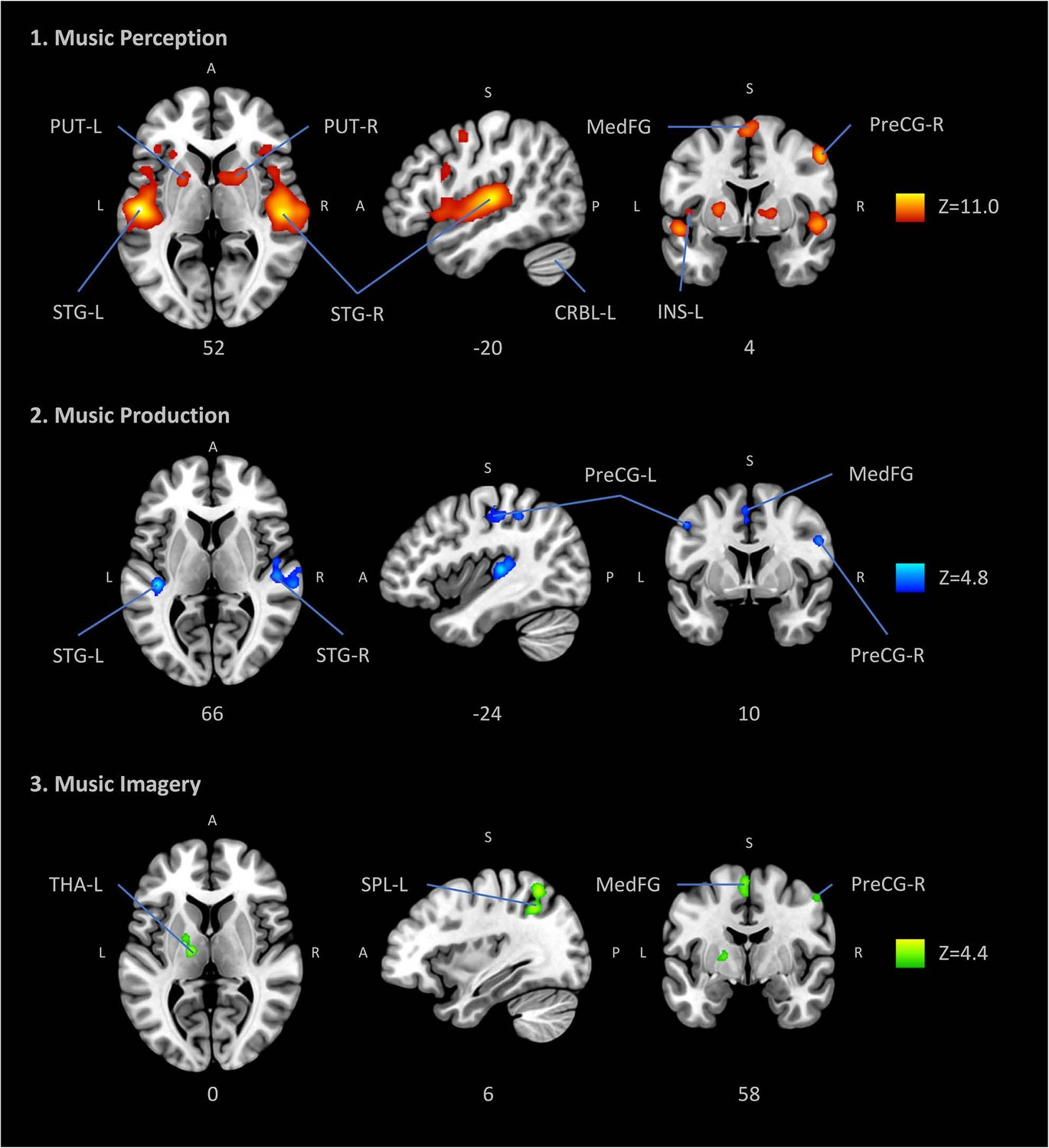Meta-analysis on music in the brain
MIB postdoc Victor Pando-Naude and colleagues provide an overview of existing evidence related to musical processing in the brain.

This meta-analysis of magnetic resonance imaging studies by Pando-Naude et al. provides an overview of existing evidence related to musical processing in the brain. The study includes 130 MRI studies of music perception, music production, and music imagery, and included 2,516 participants.
This comprehensive review of music in the brain is highly recommended for music neuroscience newcomers or anyone interested in the topic.
Music is a ubiquitous aspect of the human experience and serves as a privileged tool to gain more knowledge into the function and structure of the human brain. One of such key features is the ability to integrate information from external stimuli with internal representations, associations, beliefs, and predictions to select the best response to the ever-changing environment. This constant flow of information is often framed in the notorious “top-down/bottom-up” dichotomy, which has been redefined recently by the predictive coding theory. Within this framework, music is an ideal example of constant multi-modal integration of information, as it includes different processes such as perception, imagery, and production/creativity.
The music perception ALE (activation likelihood estimation) showed convergence in bilateral primary auditory cortex, bilateral primary motor cortex, premotor and supplementary motor areas, insula, putamen, and cerebellum; confirming areas related to audio-motor coupling and limbic processing while listening to music.
The music production ALE showed convergence in bilateral primary auditory cortex, bilateral primary motor cortex, pre-motor and supplementary motor areas, anterior cingulate, and inferior frontal gyrus; confirming areas that integrate perception and action while playing music.
The music imagery ALE showed convergence in primary motor cortex, pre-motor and supplementary motor areas, thalamus, and distinct parietal areas including the angular gyrus; confirming areas related to motor planning and theory-of-mind while we imagine music.
The results were complemented with contrast analyses and meta-analytic connectivity modelling to identify patterns of co-activation from music-related regions-of-interest, aiming to functionally segregate each region’s putative contribution to behavioural domains and paradigm classes.
In conclusion, the meta-analytic results show that the brain relies on different structures and mechanisms to process similar musical information. Indeed, music perception and music production depend on auditory cortices, sensorimotor cortices, and cerebellum. Distinctly, music imagery shows a key recruitment of parietal regions. Taken together, our findings provide robust evidence that the brain requires different structures to process similar information which is made available either by the interaction with the environment (i.e., bottom-up) or by internally generated content (i.e., top-down).
